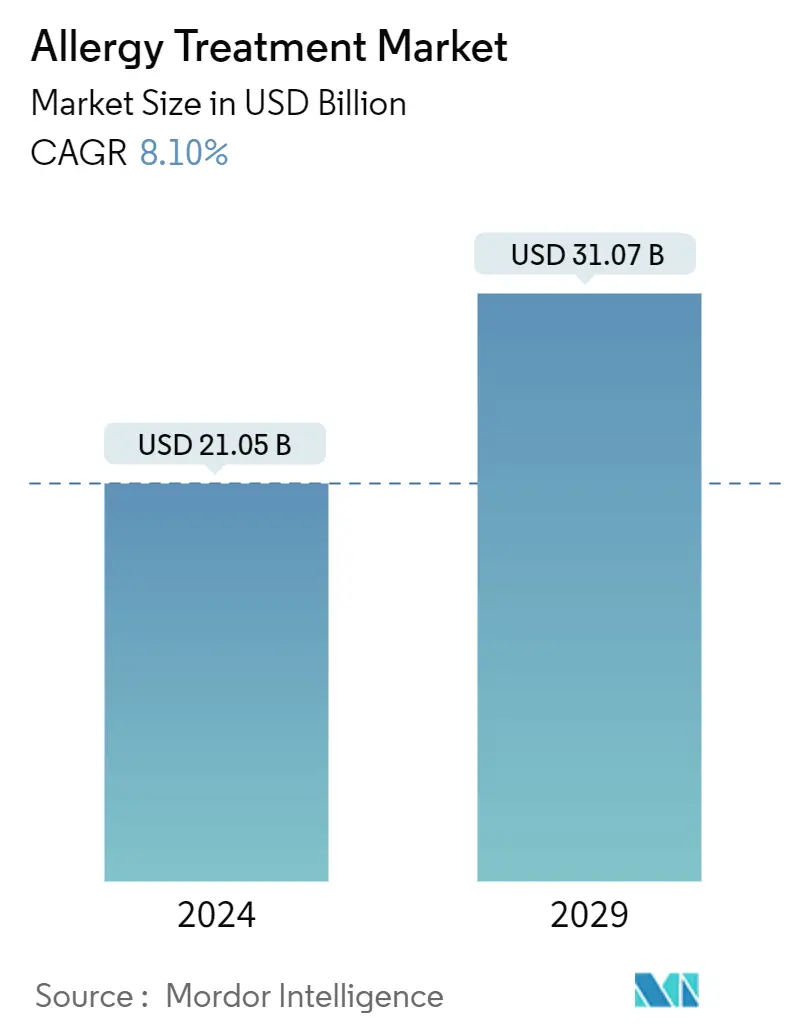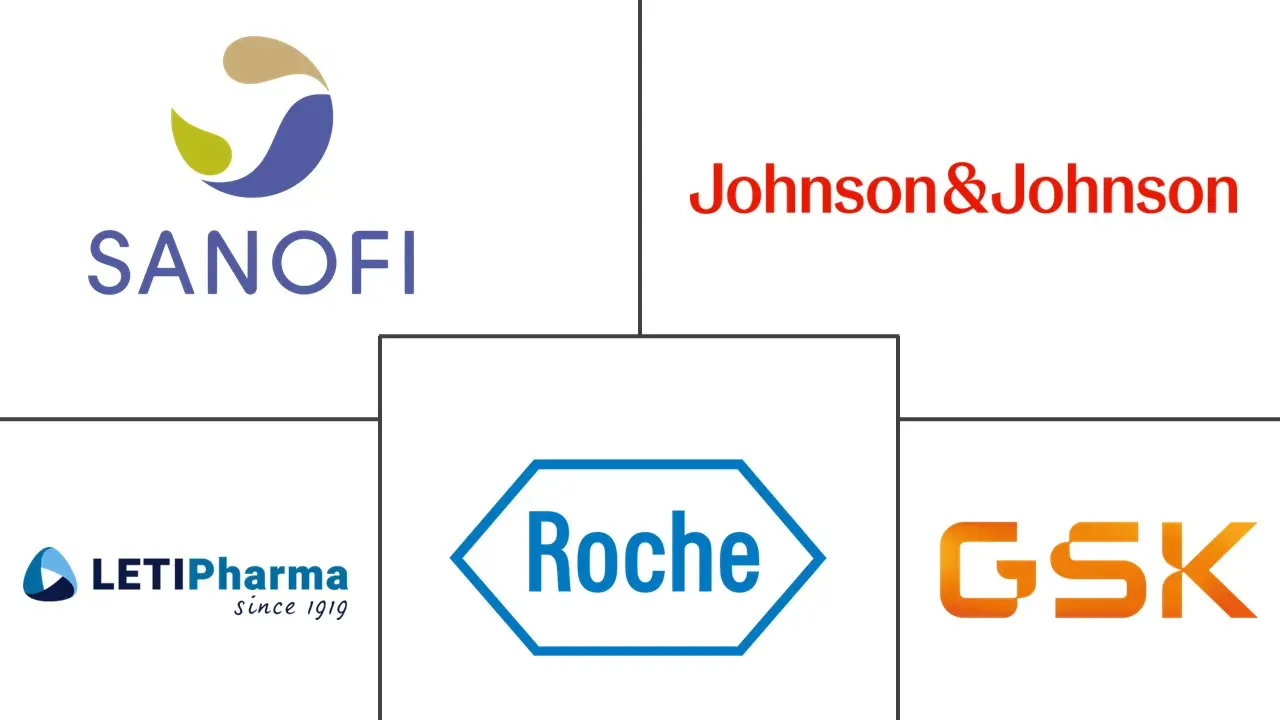Market Size of Allergy Treatment Industry

| Study Period | 2024 - 2029 |
| Market Size (2024) | USD 21.05 Billion |
| Market Size (2029) | USD 31.07 Billion |
| CAGR (2024 - 2029) | 8.10 % |
| Fastest Growing Market | Asia Pacific |
| Largest Market | North America |
Major Players
*Disclaimer: Major Players sorted in no particular order |
Need a report that reflects how COVID-19 has impacted this market and its growth?
Allergy Treatment Market Analysis
The Allergy Treatment Market size is estimated at USD 21.05 billion in 2024, and is expected to reach USD 31.07 billion by 2029, growing at a CAGR of 8.10% during the forecast period (2024-2029).
The increasing prevalence of various kinds of allergies, the rising investment in the development of novel allergic therapies, and the growing importance of self-medication are the major factors accelerating the market's growth. Allergies occur due to the hypersensitivity of the immune system to foreign substances. Allergic conditions are one of the most common health issues affecting the population in the United States. For instance, in 2023, the Asthma and Allergy Foundation of America (AAFA) reported that more than 100 million Americans are affected by various types of allergies yearly. According to the same report, about 26% of adults and 19% of children in the United States were diagnosed with seasonal allergic rhinitis.
Furthermore, according to the study published in the National Library of Medicine in October 2023, across continents, the values of asthma prevalence ranged from 3.44%, 3.67%, 4.90%, 5.69%, 8.29%, and 8.33% in Asia, Africa, South Africa, Europe, North America, and Oceania, respectively. Thus, the growing prevalence of allergies is expected to increase demand for their treatment, thereby boosting the market's growth.
With the increase in allergic reactions, there are rising investments worldwide to develop novel treatments. For instance, in October 2023, Aiolos Bio, a newly launched startup with an asthma drug in clinical trials, announced that it raised USD 245 million in Series A funding. Aiolos plans to use the funds for phase II clinical trials of its lead drug candidate, AIO-001, for moderate-to-severe asthma patients. In addition, in January 2024, GSK initiated a deal to acquire Aiolos Bio for USD 1.4 billion to access the development of Aiolos' phase II-ready AIO-001 asthma treatment.
Furthermore, in January 2024, Aravax, a startup firm, raised USD 66 million in a funding round to develop a novel peanut allergy treatment. Aravax is a clinical-stage biotechnology company focused on revolutionizing food allergy treatment through its product, PVX108. Hence, such huge investments are expected to drive the market studied over the forecast period.
However, the growing preference for low-cost biosimilars and lack of awareness regarding allergy immunotherapy can hamper the market's growth.

